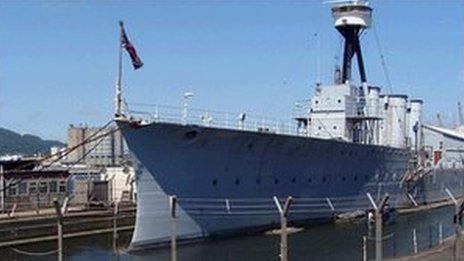World War One: Events held in Northern Ireland to mark centenary of start of war
- Published
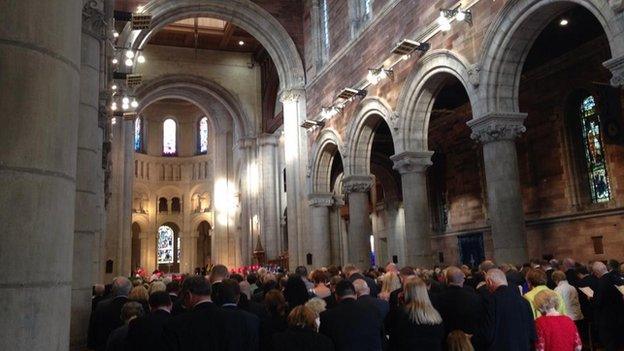
Hundreds of people attended a commemorative service at St Anne's Cathedral in Belfast
The head of the Anglican church in Ireland has said that commemorating the outbreak of World War One fuses sadness, pride and horror.
Richard Clarke, who is the Archbishop of Armagh, made the comments at a service held at St Anne's Cathedral in Belfast for the anniversary of the start of WW1.
Northern Ireland's First Minister Peter Robinson and Secretary of State Theresa Villiers attended.
Prince Andrew represented the Queen.
Dr Clarke said the occasion prompted "sadness at the loss of so much life, young and old," "pride in the unselfish actions of many people," "horror at the inhumanity that always accompanies war" and "determination that if this Great War was most certainly not a 'war to end all wars', nevertheless you and I will strive to bring God's peace and light into God's world."
War dead
During the service, five candles were lit, each representing a year of the war.
A list of names of Ireland's war dead was carried down from the altar and laid next to a candle, which was then lit by Prince Andrew.
Dean John Mann of the cathedral said: "One of the things we're very conscious of is how easy it is for countries to move in to a war situation and how difficult it is to move out of that.
"We're very conscious of what's happening in the world today."
Northern Ireland also marked the 100th anniversary of World War One with a gun salute over Belfast Lough.
A single cannon shot was fired from Grey Point Fort in County Down at 13:00 BST.
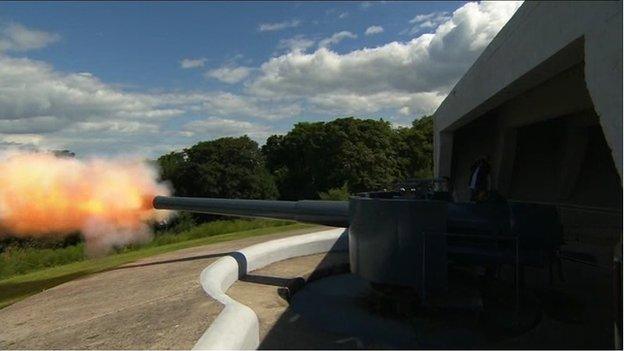
A single cannon shot was fired from Grey Point Fort in County Down
The Belfast Lough gun salute was attended by Environment Minister Mark H Durkan, from the Social Democratic and Labour Party (SDLP) and Jeffery Donaldson from the Democratic Unionist Party (DUP).
Grey Point Fort is a former coastal defence site that overlooks the entrance to the lough.
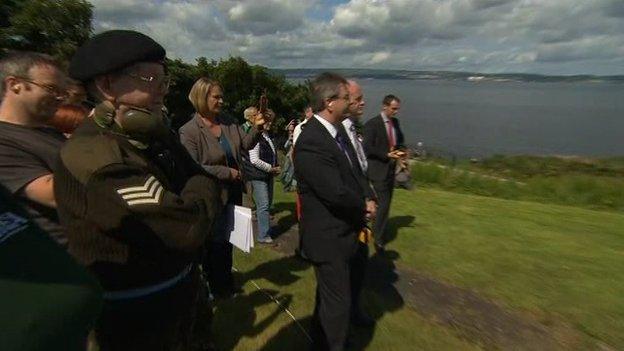
Both unionist and nationalist politicians attended the gun salute over Belfast Lough
Situated at Helen's Bay, the artillery site was completed in 1907 to defend the city from naval attack.
The fort has been preserved as a visitor attraction and features a pair of 23ft long bore guns, each of which has a 6in diameter.
Soldiers across Northern Ireland have also attended services and vigils to mark the centenary.
At the headquarters of 38 (Irish) Brigade in Lisburn, County Antrim, members of the armed forces and their families attended a service during which the lights went out one by one until only a candle remained to light the stained glass window. It, too, was extinguished for a two-minutes' silence.
'Supreme sacrifice'
Similar services were held at Palace Barracks in Holywood, County Down, and at Aldergrove, County Antrim, where soldiers and aircrew were joined by air force cadets currently on their summer camp.
Personnel also marked the centenary at Army reserve centres around Northern Ireland.
Speaking at a commemoration in Glasgow Cathedral, First Minister Peter Robinson said: "The key themes of remembrance and reconciliation are relevant to all of us in Northern Ireland as we continue to build a peaceful and shared society.
"It has often been said, but we must never forget the supreme sacrifice of so many to build a better future for us."
Historians have estimated that more than 200,000 Irish-born soldiers served in the British Army and Navy from 1914 to 1918.
The names of 49,400 Irish casualties of WW1 are listed on the Republic of Ireland's National War Memorial at Islandbridge, Dublin.
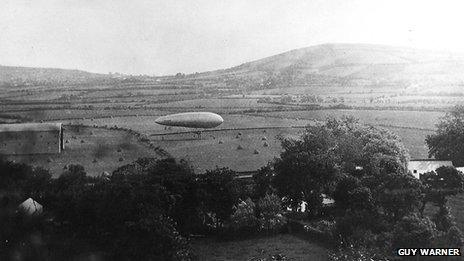
An airship lands at Bentra Mooring Station near Whitehead in County Antrim
Many soldiers from Northern Ireland fought for the 36th (Ulster) Division.
The division was one of the few divisions to make significant gains on the first day on the Battle of the Somme in July 1916.
However, it came at a heavy price, with the division suffering 5,500 men killed, wounded or missing in two days of fighting.
The Ulster Tower, a memorial to the men of the 36th Division, is situated in Thiepval in northern France. World War One was one of the costliest conflicts in history with fighting continuing until 11 November 1918.
A candlelit vigil was held later on Monday evening at Belfast City Hall.
- Published4 August 2014
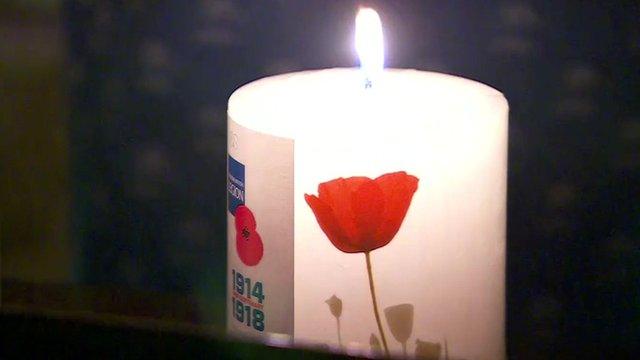
- Published29 June 2014

- Published31 July 2014

- Published25 June 2014
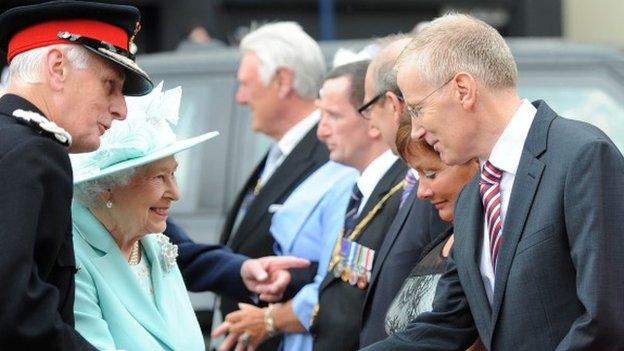
- Published1 August 2014
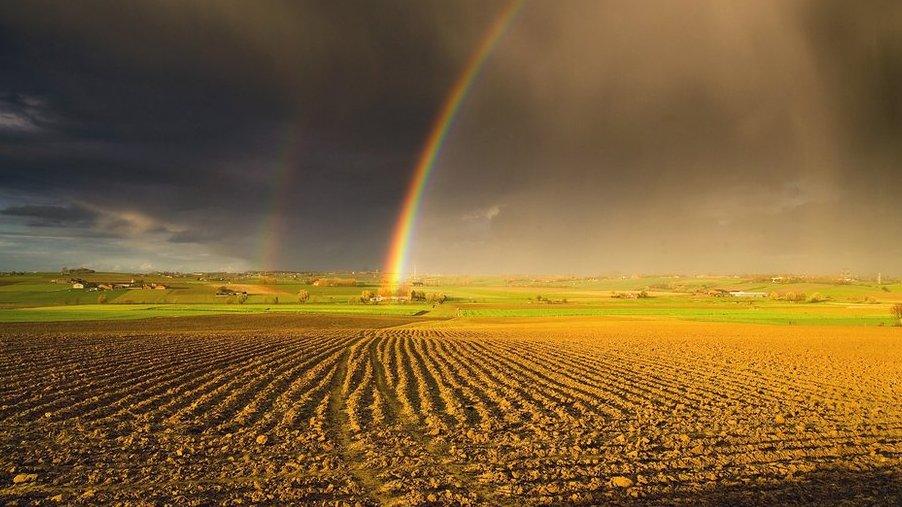
- Published24 February 2014

- Published11 November 2013
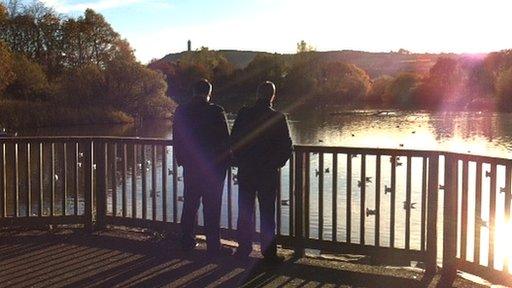
- Published21 November 2012
